Research Article
Volume 1 Issue 6 - 2017
Metamorphosis of Cacao Pods Affected by Frosty Pod Rot (Moniliophthora roreri) Freely Left on the Ground
Agronomist Engineer Carrera 86 #34-56, Medellín, Colombia
*Corresponding Author: Gabriel Cubillos, Agronomist Engineer Carrera 86 #34-56, Medellín, Colombia.
Received: September 16, 2017; Published: October 16, 2017
Abstract
Cacao Frosty Pod Rot, caused by Moniliophthora Roreri (Cif. & Par.) Evans., et al. is one of the main diseases responsible for significant losses in cacao crops over South and Central America. According to cultural control, which has proven to be the most effective method, the affected pods removed from trees and freely discarded on the ground play an important role in terms of disease management. Observing the changes suffered by the pods left on the ground, in natural conditions, required monitoring over eight consecutive weeks. It was found they rapidly lost sporulation power, thus epidemic potential. Additionally, the contaminated pods were covered by leaf litter generated from the cacao and shade trees which worked as a barrier against spreading of spores.
Keywords: Cacao Frosty Pod Rot; Cacao diseases; Moniliophthora roreri; Cultural control
Introduction
The cacao pods affected by Moniliophthora roreri hanging on trees are source of Frosty Pod Rot epidemic episodes, nonetheless, the potential of infection represented by diseased fruit removed from trees and left freely on the ground is unknown. As a consequence, observation of the evolutionary process suffered by M. roreri-infected pods (sporulated and not sporulated) under these conditions was made in the farm La Nacional, located in the municipality of Támesis, Colombia. The fruits were monitored every two weeks during eight consecutive weeks.
Materials and Methods
The observations were carried out in the farm La Nacional, located at 1000 meters above the sea level in the municipality of Támesis, Antioquia, Colombia, 23°C average temperature; 2700 mm of annual rain and 78% of relative humidity.
On March 22, 2017, 2 sporulated pods (Figure 1A) and 2 non-sporulated pods (Figure 1B) of the ICS-39 clone were collected and discarded on the ground within the crop. Observations were carried out on April 5, April 19, May 3 and May 17, corresponding to eight consecutive weeks.
At the time of their disposal on the ground, profuse formation of mycelium initiating sporulation was evidenced on sporulated pods, Figure 1A; non-sporulated pods show brown spots and natural brightness, Figure 1B.
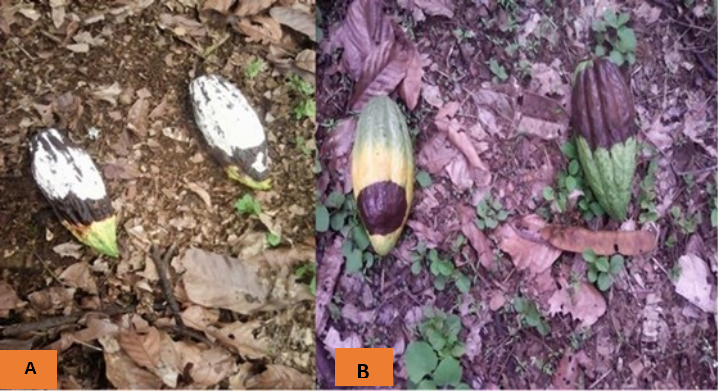
Figure 1: Fruits with M. roreri freshly arranged on the ground.
A, sporulated. B, not sporulated. Farm La Nacional, municipality of Támesis, Colombia.
A, sporulated. B, not sporulated. Farm La Nacional, municipality of Támesis, Colombia.
Results and Discussion
On April 5, two weeks later, sporulated pods were blackened and had profuse, but slightly caked sporulation (Figure 2A). The non-sporulated pods lost their brightness and sporulation took place in limited conditions (Figure 2B).
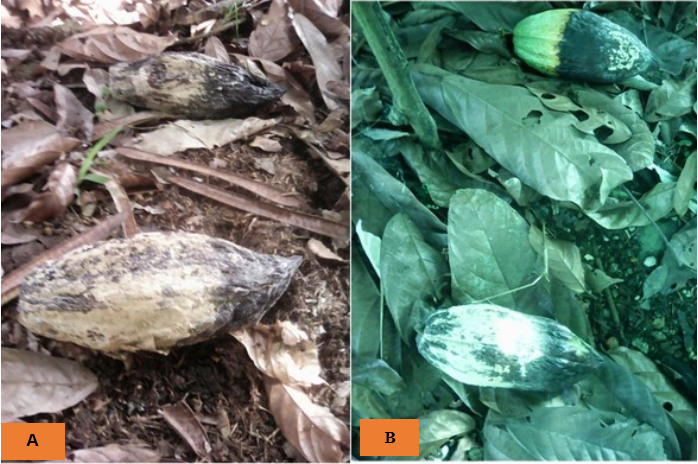
Figure 2: Fruits with M. roreri arranged on the ground two weeks later.
A, sporulated. B, not sporulated. Farm La Nacional, municipality of Támesis, Colombia.
A, sporulated. B, not sporulated. Farm La Nacional, municipality of Támesis, Colombia.
On April 19, four weeks later, the sporulated pods were completely blackened, sporulation was reduced and spores were spliced or crusted, Figure 3A; non-sporulated pods were also blackened, evidenced loss of their initial sporulation and spores were caked or crusted, Figure 3B. The fruits in general began to be covered or buried by leaf litter coming from cacao and shade trees.
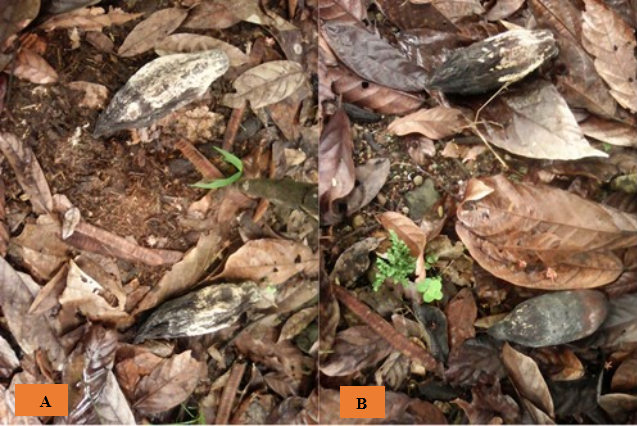
Figure 3: Pods with M. roreri arranged on the ground four weeks later.
A, sporulated. B, non-sporulated. Farm La Nacional, municipality of Támesis, Colombia.
A, sporulated. B, non-sporulated. Farm La Nacional, municipality of Támesis, Colombia.
On May 3, 6 weeks later, pods in sporulation stage had lost their initial sporulation and showed advanced decomposition (Figure 4A). In the non-sporulated pods, the blackening and loss of initial sporulation are evident (Figure 4B). Covering of pods by leaf litter is easily identified.
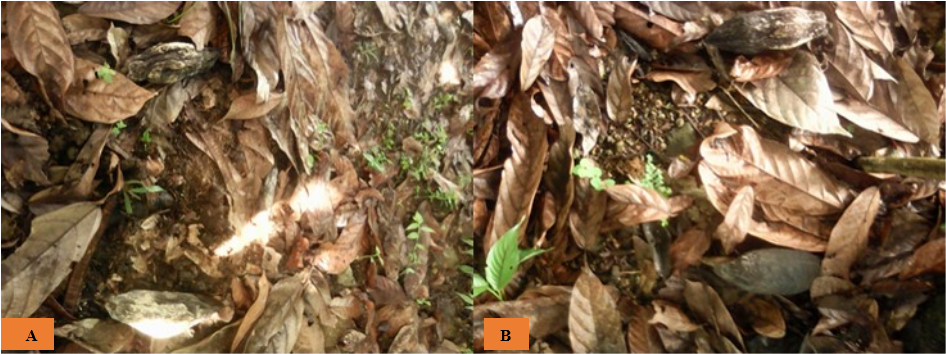
Figure 4: Pods with sporulated Frosty Pod Rot,
4A, and non sporulated, 4B, six weeks after their disposal in the soil. Farm La Nacional, municipality of Támesis, Colombia.
4A, and non sporulated, 4B, six weeks after their disposal in the soil. Farm La Nacional, municipality of Támesis, Colombia.
On May 17, eight weeks later, the sporulated pods were completely blackened and evidenced a substantial loss of their initial sporulation. The spore remnants were compacted into thin crusts, Figures 5A and 6A. The non-sporulated pods had almost completely lost the initial sporulation levels and were blackened, Figures 5B and 6B. In both cases, it is evident how pods will eventually be buried by leaf litter, Figure 5.
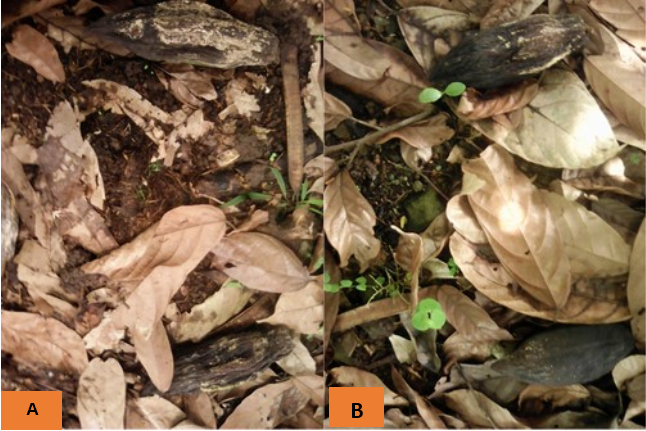
Figure 5: Pods with Frosty Pod Rot, sporulated
5A, non-sporulated 5B, 8 weeks after disposal on the ground. Farm La Nacional, municipality of Támesis, Colombia.
5A, non-sporulated 5B, 8 weeks after disposal on the ground. Farm La Nacional, municipality of Támesis, Colombia.
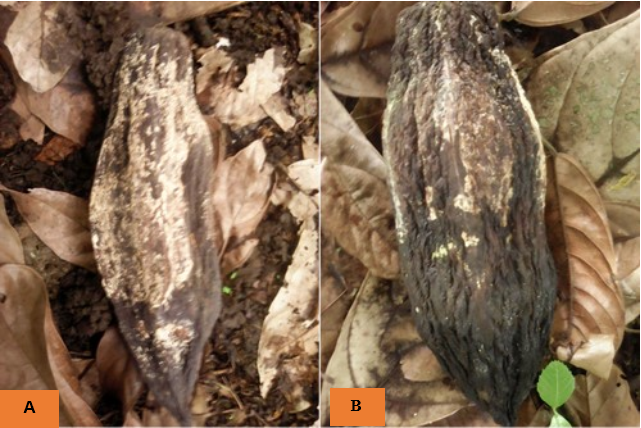
Figure 6: Pods with M. roreri eight weeks after being discarded on the ground.
A, sporulated fruit. B, non-sporulated. Farm La Nacional S.A., Colombia.
A, sporulated fruit. B, non-sporulated. Farm La Nacional S.A., Colombia.
Figure 7 shows the changes occurred in sporulated and non-sporulated M. roreri-infected pods freshly deposited on the ground (A and B, respectively). On C and D their appearance eight weeks later can be seen.
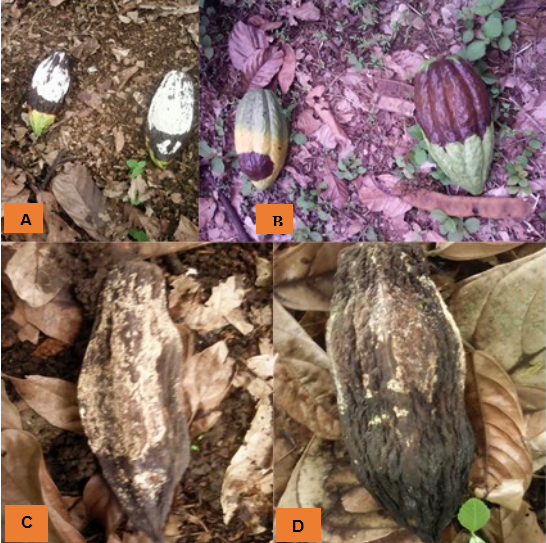
Figure 7: Sporulated pods freshly discarded on the ground (7A). Sporulated fruit eight weeks later (7C). Non- sporulated fruits put on the ground (7B). Non-sporulated pod eight weeks later (7D). Farm La Nacional, Támesis, Colombia.
The results indicate that pods infected with M. roreri discarded on the ground rapidly lose their sporulation power and eight weeks later completely lose their full infectivity potential. As sporulation is reduced to thin crusts, the possibility for spores to be spread by weak breezes that occur at ground level is nullified; this was confirmed by the findings of González., et al. (1983) who recorded a negligible amount of released spores (1450 spores per fruit) from pods arranged on the ground after a week subjected to direct breeze. On the other hand, diseased pods hanging from trees evidence high levels of natural sporulation (on the order of 43500-166200 conidia/hour/fruit) (González., et al. 1983); according to Evans (2016) they remain active for up to nine months and are permanently exposed to the impact of the wind. Another factor that contributes to blocking these pods as sources of infection is the leaf litter which is gradually deposited on them and works as a barrier against the spreading of spores. It should be added that, when discarded on the ground, not all pods showed brown stain reaching sporulation and those which reached it, did so in a reduced form, thus lowering the potential of inoculum.
Conclusions
The cacao pods with Frosty Pod Rot left on the ground rapidly lose their sporulation, thus limiting their infective power. Besides, they are progressively covered by leaf litter from cacao and shade trees which helped avoiding liberation and dispersion of spores. Consequently, within the cultural control platform the recommendation of leaving pods affected by Moniliophthora roreri on the ground after being removed from the trees (Cubillos, 1981, 2017a, 2017b) is confirmed. This means the cultural control of Frosty Pod Rot is a low-cost practice which simply consists of removing diseased pods, freely discarding them on the ground every week during the first three months (while the disease cycle is interrupted) and then, along with the harvest rounds of ripe cocoa.
Acknowledgements
The author wants to make a special recognition to Colombia´s Compañía Nacional de Chocolates (Group Nutresa) which facilitated the farm Granja Agrícola La Nacional to make the observations. I cannot pass unnoticed the review of the English version in charge of Mr. David Hernández.
The author wants to make a special recognition to Colombia´s Compañía Nacional de Chocolates (Group Nutresa) which facilitated the farm Granja Agrícola La Nacional to make the observations. I cannot pass unnoticed the review of the English version in charge of Mr. David Hernández.
References
- Cubillos G. “Exploraciones acerca de la importancia que tienen los frutos enfermos dejados en el suelo como fuentes primarias de infección de Moniliophthora roreri (Cif. & Par.) Evans., et al. El Cacaotero Colombiano”. 18 (1981): 38-43.
- Cubillos G. “Frosty Pod Rot, disease that affects the cocoa (Theobroma cacao) crops in Colombia”. Crop Protection 96 (2017): 77-82.
- Cubillos G. “Frosty Pod and Pod Borer: enemies that damage cocoa crops in Colombia .First edition”. Lambert Academic Publishing (2017b): 43.
- Evans HC. “Frosty Pod Rot (Moniliophthora roreri), pages 63-96. In: Cacao diseases. A history of Old Enemies and New Encounters (First edition). Bailey Bryan A-Mehinhardt Lindel M (Eds.)”. Springer 3 (2016): 633.
- González LC., et al. “Epifitiología y combate de la Moniliasis del cacao. El Cacaotero colombiano”. 23 (1983): 40-53.
Citation:
Gabriel Cubillos. “Metamorphosis of Cacao Pods Affected by Frosty Pod Rot (Moniliophthora roreri) Freely Left on the
Ground”. Innovative Techniques in Agriculture 1.6 (2017): 267-272.
Copyright: © 2017 Gabriel Cubillos. This is an open-access article distributed under the terms of the Creative Commons Attribution License, which permits unrestricted use, distribution, and reproduction in any medium, provided the original author and source are credited.





























 Scientia Ricerca is licensed and content of this site is available under a Creative Commons Attribution 4.0 International License.
Scientia Ricerca is licensed and content of this site is available under a Creative Commons Attribution 4.0 International License.